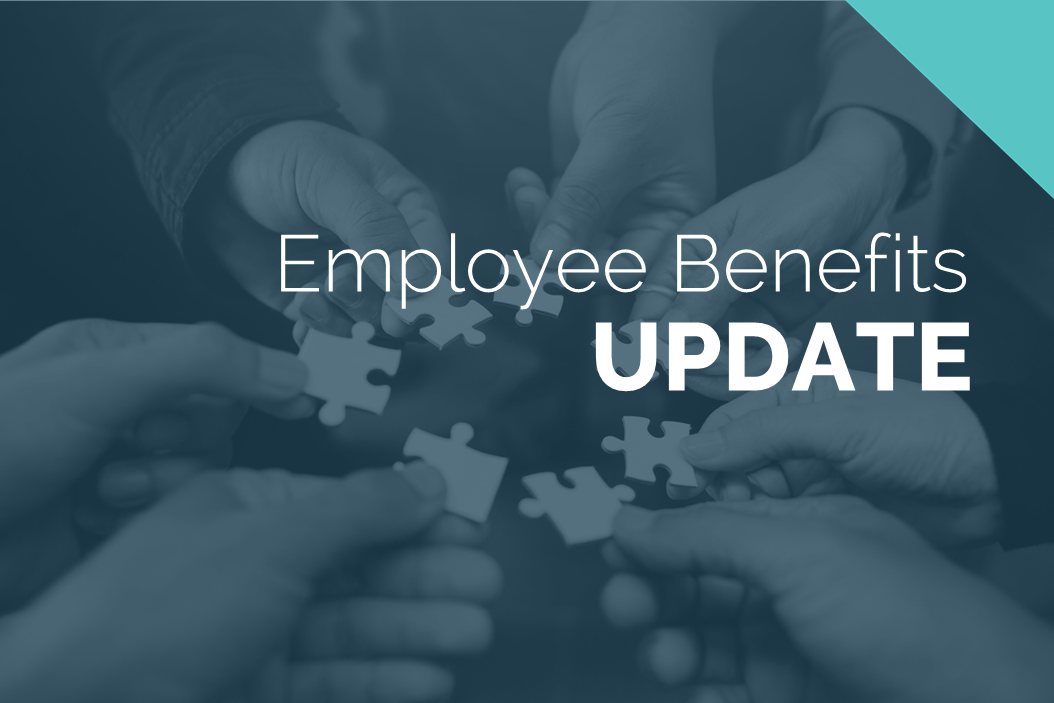Effective May 21, 2023, P&N has joined EisnerAmper. Read the full announcement here.

As a part of its year-end spending legislation, Congress passed the Setting Every Community Up for Retirement Enhancement Act (SECURE Act or "Act"). After passage by Congress, President Trump signed the SECURE Act into law on December 20, 2019. The SECURE Act is the most significant piece of retirement plan legislation since 2006. The goal of the Act is to provide better employee access to retirement plans, thus contributing to greater individual retirement security. The Act also seeks to help individuals maintain their standard of living in retirement while not outliving their retirement benefits.
Important Updates
Required Minimum Distribution Age increases from 70 ½ to 72. After December 31, 2019, individuals can wait to take any required minimum distributions (RMD) until April 1 of the year after attaining age 72. In addition, those working beyond age 72 can still postpone RMDs from their employer’s retirement plan until separation from service. There is no relief for those who have already started to receive RMDs or those required to receive RMDs by April 1, 2020.
Birth or Adoption Expenses. After December 31, 2019, a retirement plan may be amended to provide for penalty-free distributions for birth or adoption expenses of up to $5,000. The withdrawal is permissible for up to one year following the birth or adoption of a child. In general, the withdrawal may be repaid or partially repaid to a retirement plan, even if it is not the plan from which the withdrawal was made.
Lifetime Income Disclosures. After the Department of Labor releases final rules, plan sponsors will be required to disclose, at least annually, an estimate of the lifetime monthly payments a plan participant and their beneficiaries would receive from the retirement plan, even if the plan does not provide an annuity option.
Annuity Selection Safe Harbor. Beginning January 1, 2020, plan sponsors can offer an annuity option to their plan participants with far less fiduciary concern. The Act provides a checklist for plan sponsors to ensure fiduciary compliance when selecting an annuity for a defined contribution plan.
No Plan Loans Through Credit Cards. Beginning January 1, 2020, plan loans may no longer be made through the use of credit cards.
Increased Penalties. The penalties for the failure to file the Form 5500, Form 8955, and the failure to provide the withdrawal notice have increased tenfold. The Form 5500 maximum penalty increased from $15,000 to $150,000 and the Form 8955 maximum penalty increased from $5,000 to $50,000. These penalty increases are effective January 1, 2020.
Adoption of Retirement Plan After the End of the Tax Year. Beginning January 1, 2020, an employer can adopt a retirement plan after the end of the tax year and through the due date of the tax return, including extensions. However, 401(k) plans must still adopted prior to receiving salary deferral contributions. This gives the employer the ability to consider alternative plan designs.
Repeal of Age Limit for IRA Contributions. Beginning January 1, 2020, an IRA contribution can be made by an individual of any age.
Tax Credits. The tax credits available for employers starting a retirement plan or including automatic enrollment for newly-hired employees have increased, in some cases, up to $5,000. These credits apply for the first three years of implementation.
Pooled Employer Plans (PEP). Beginning January 1, 2022, unrelated employers can participate in a single PEP to help particularly small employers achieve economies of scale for plan administration and operations. These plans must have the same named fiduciary, administrator, plan year, and investment options for all plan participants. The PEP will be able to file a consolidated Form 5500. It is expected that the Department of Labor will be issuing further guidance with respect to PEPs.
Qualified Automatic Contribution Arrangements. Beginning January 1, 2020, 401(k) plans that include a qualified automatic contribution arrangement may now escalate an employee’s contribution up to 15% after the first plan year of participation. This provision is designed to increase retirement readiness by helping employees save more for retirement.
The SECURE Act is the most significant piece of retirement plan legislation since 2006.
Coverage of Long-Term, Part-Time Workers. Beginning on January 1, 2021, plan sponsors will have to track employees who perform work for at least 500 hours of service over three consecutive years and offer them the opportunity to contribute to a 401(k) plan. Since the counting of hours and years of service will start in 2021, mandated participation for these employees is delayed until 2024. This provision does not change the rules related to employer contributions. Furthermore, these employees will be disregarded for nondiscrimination testing and top-heavy rules.
Death of the Stretch IRA. The Act makes a significant change to the ability to use an IRA as an intergenerational wealth transfer tool. The Act eliminates the Stretch RMD option and generally requires beneficiaries to withdraw all assets within 10 years of inheriting the account. Qualified designated beneficiaries, including surviving spouses, minor children, disabled individuals, the chronically ill, and beneficiaries not more than 10 years younger than the IRA owner are not subject to the limitation. Minor children will have 10 years to withdraw all assets after attaining the age of maturity, which is age 18 in Louisiana. Furthermore, minor children must be direct lineal descendants. Therefore, designating your grandchild as a beneficiary will not qualify for the minor exception.
Health and Welfare Plan Changes
Congress has once and for all repealed the 40% excise tax, known as the Cadillac Tax, on high-benefit health plans. In addition, the health insurance tax is repealed effective January 1, 2021, while the medical device tax is repealed effective January 1, 2020. Finally, the Patient Centered Outcome Research Institute fee (PCORI) has been extended for 10 years.
P&N Can Help
The SECURE Act comes with a multitude of changes that impact businesses, individuals, and families in both the short and long term. If you have questions about what this means for your business or for your personal retirement planning, please contact us to start a discussion.




